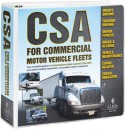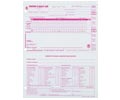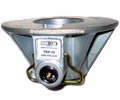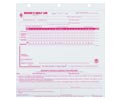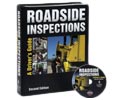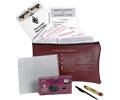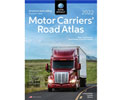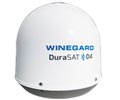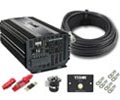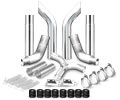Roadside Inspections
Roadside inspections are a fact of life for owner-operators and other drivers. The main purpose of a roadside inspection is to give the commercial motor vehicle and its driver an on-the-spot safety check-up.
Specially trained inspectors from all 50 states plus Canada and Mexico perform roadside inspections. The procedures and training were developed and are maintained by the Commercial Vehicle Safety Alliance (CVSA). CVSA is an organization of state, local, provincial and federal officials responsible for administration and enforcement of motor carrier safety laws/regulations in the United States, Canada, and Mexico. People from the industry are also welcome and are encouraged to join CVSA.
Motor carrier inspectors use the North American Uniform Out-of-Service Criteria maintained by CVSA to determine whether a violation is so severe that the commercial motor vehicle or driver must be placed out of service. Once a vehicle or driver has been declared “out-of-service,” motor carriers may not require (or permit) a driver to operate it until the unacceptable conditions specified in the “out-of-service” notice have been corrected.
Roadside inspections can occur practically anywhere. With advances in technology and enforcement procedures, roadside inspections are no longer limited to being conducted at permanent facilities located along our highways. Portable and mobile inspection sites that can be set up at rest areas, truck stops, or rural roadways are commonplace in many states.
Types of Roadside inspections
The CVSA has six different levels of roadside inspection, with varying degrees of emphasis and detail. Following is a brief description of the various levels:
- Level I – This is the North American Standard Inspection. It includes examination of documents the driver is required to carry and a detailed vehicle inspection.
- Level II – This is called the Walk-Around Driver/Vehicle Inspection. It includes an examination of the driver’s documents and vehicle inspection items that can be inspected without physically getting under the vehicle.
- Level III – This is a Driver-Only Inspection. It involves checking the documents and items related to the driver only.
- Level IV – These are Special Inspections. These usually involve a one-time examination of a particular item, such as checking drivers’ licenses or checking a vehicle’s brakes.
- Level V – This is a Vehicle-Only Inspection. It is the same detailed inspection of the vehicle that is conducted during a Level I inspection, but is conducted without a driver present. This kind of inspection may be done during a compliance review at a carrier’s place of business.
- Level VI – This inspection is an Enhanced NAS Inspection for Radioactive Shipments. As the name implies, this level of inspection is specific for select radiological shipments.
The Level I inspection is the one most often conducted.
A "typical" Level I inspection
It takes about 30 minutes to an hour for an inspector to complete a Level I inspection.
Let’s review the documents you would be expected to have on with you or in the vehicle:
- Driver’s license. A current, valid license for the commercial motor vehicle he/she is driving.
- Medical examiner’s certificate. A current, valid medical examiner’s certificate, and waiver if applicable.
- Driver’s record of duty status (log). Driver’s log for the current day and the previous seven days. Other documents that may verify log entries may also be requested. The driver’s log shall be current to the last change of duty status.
- Documentation of annual inspection. A copy of the annual inspection report or an annual inspection sticker must be on the vehicle. If complying with a mandatory state inspection program, any required document for that program.
- Hazardous materials paperwork. Shipping papers must be within the driver’s immediate reach.
- Permit credentials. IRP cab card, IFTA license and decals, SSRS (RS-3) receipt, any necessary temporary permits.
The following vehicle components are inspected:
- Brakes
- Coupling devices
- Exhaust system
- Frame
- Fuel system
- Headlights, turn signals, taillights, lights on projecting loads
- Cargo securement
- Steering mechanism
- Suspension
- Trailer body
- Tires
- Wheels, rims, and hubs
- Windshield wipers
- Hazardous materials (as applicable)
Roadside Inspection Report
At the conclusion of the inspection, the inspector will give you an inspection report and explain violations and defects (if any) that were found during the inspection. This form should be turned in to a company official upon arrival at the next terminal or other facility. If you’re not going to be at such a location within 24 hours, forward the report by mail. The motor carrier is required to keep a copy of the form for 12 months.
One of three results is possible after a roadside inspection:
- If no violations or defects are found, you are free to go. A CVSA decal is awarded if the vehicle passes a Level I inspection. Vehicles displaying a valid CVSA decal are generally not subject to re-inspection unless a problem is observed. Decals are valid for up to three months. The inspection report must still be forwarded as described above as a matter of record.
- If one or more violations/defects that don’t require you or your vehicle to be placed out of service are found, you will also be allowed to go. Within 15 days of such an inspection, any violations or defects noted at the inspection must be corrected, then noted on the form, and a company representative must sign it before returning it to the issuing agency.
Violations, other than out-of-service conditions, detected during inspection will not preclude completion of the trip. Violations must be corrected within 15 days prior to re-dispatch of the affected vehicle.
- If one or more violations or defects are found to be so unsafe that they must be corrected before operation can resume, the driver and/or vehicle will be placed out of service. The inspector will indicate what needs to be done before you can drive again.
Out of service
Drivers or vehicles are not to continue operating if the driver or vehicle was placed out of service for any reason. The consequences can be severe if you leave before the out-of-service situation has been rectified or if the vehicle is driven before the out-of-service repairs are made.
Sections 383.51 and 391.15 of the regulations outline the penalty structure for drivers and carriers who violate out-of-service orders, with actual disqualification periods and fine amounts being subject to the individual judge’s discretion. The penalty schedule is as follows:
- First violation – disqualification for 90 days to 2 years,
- Second violation during 10-year period – disqualification for one to five years,
- Third or subsequent violation during 10-year period – disqualification for three to five years,
- Fines – §383.53 sets fines ranging from $1000 to $2500 for drivers who violate an out-of-service order. Your carrier is also subject to a fine if it requires or allows you to violate an out-of-service order.
Bottom line: Be Prepared!
You should be prepared for a roadside inspection at any time. How you conduct yourself can make a difference in how constructive and positive the roadside inspection experience turns out to be. You should respond in a professional, courteous manner when asked to participate in a roadside inspection.
If you are leased on to a carrier, make sure you know your carrier’s policies regarding roadside inspections. The policy should cover things like when company personnel should be notified and for what reasons. How you should handle yourself in the event of a conflict or problem should also be covered. Last, responsibilities for handling the results of an inspection (such as fines, out-of-service issues, inspection report, etc.) should be addressed in the written policy.
Back to » Top | Resource Center | What Owner-Operators Need To Know?



